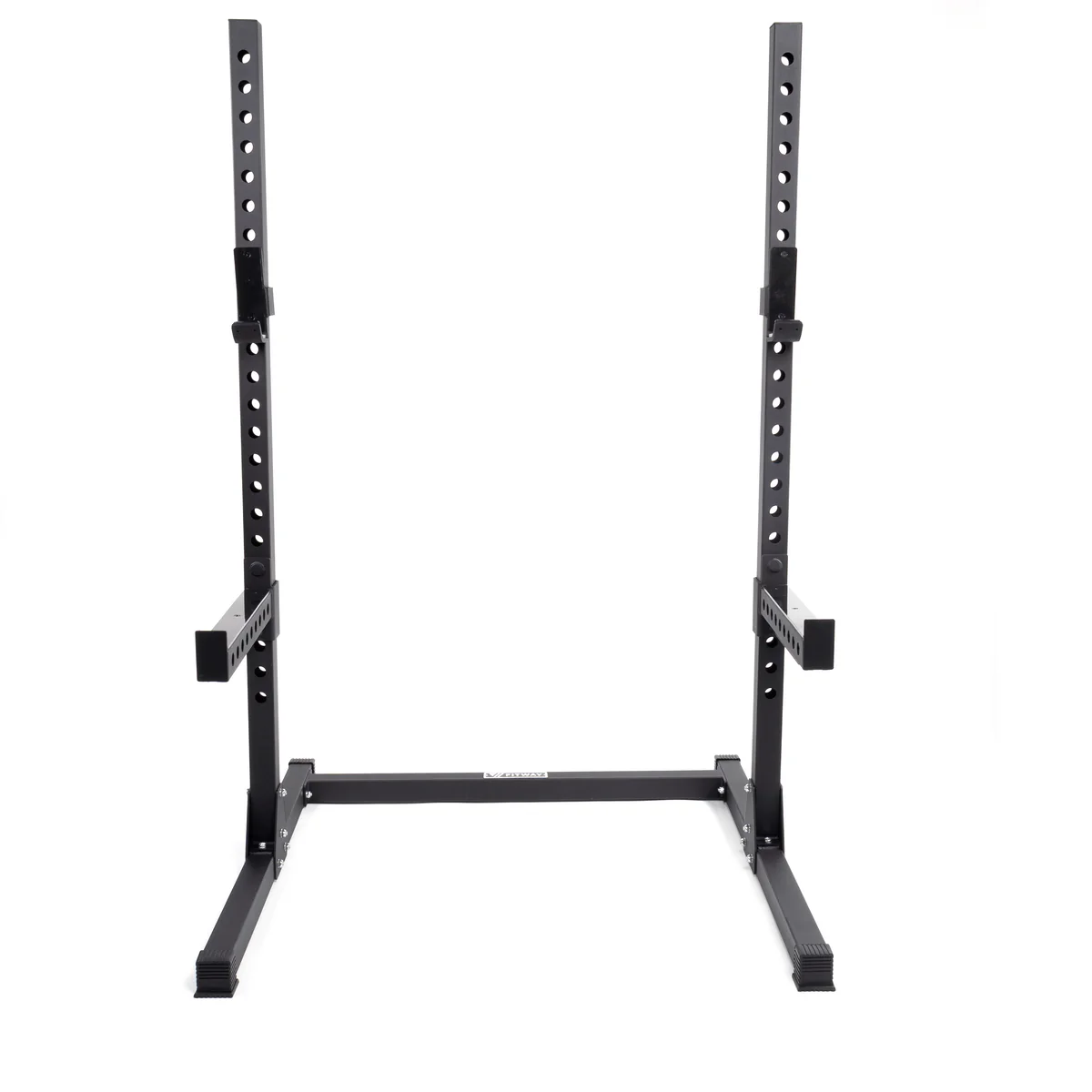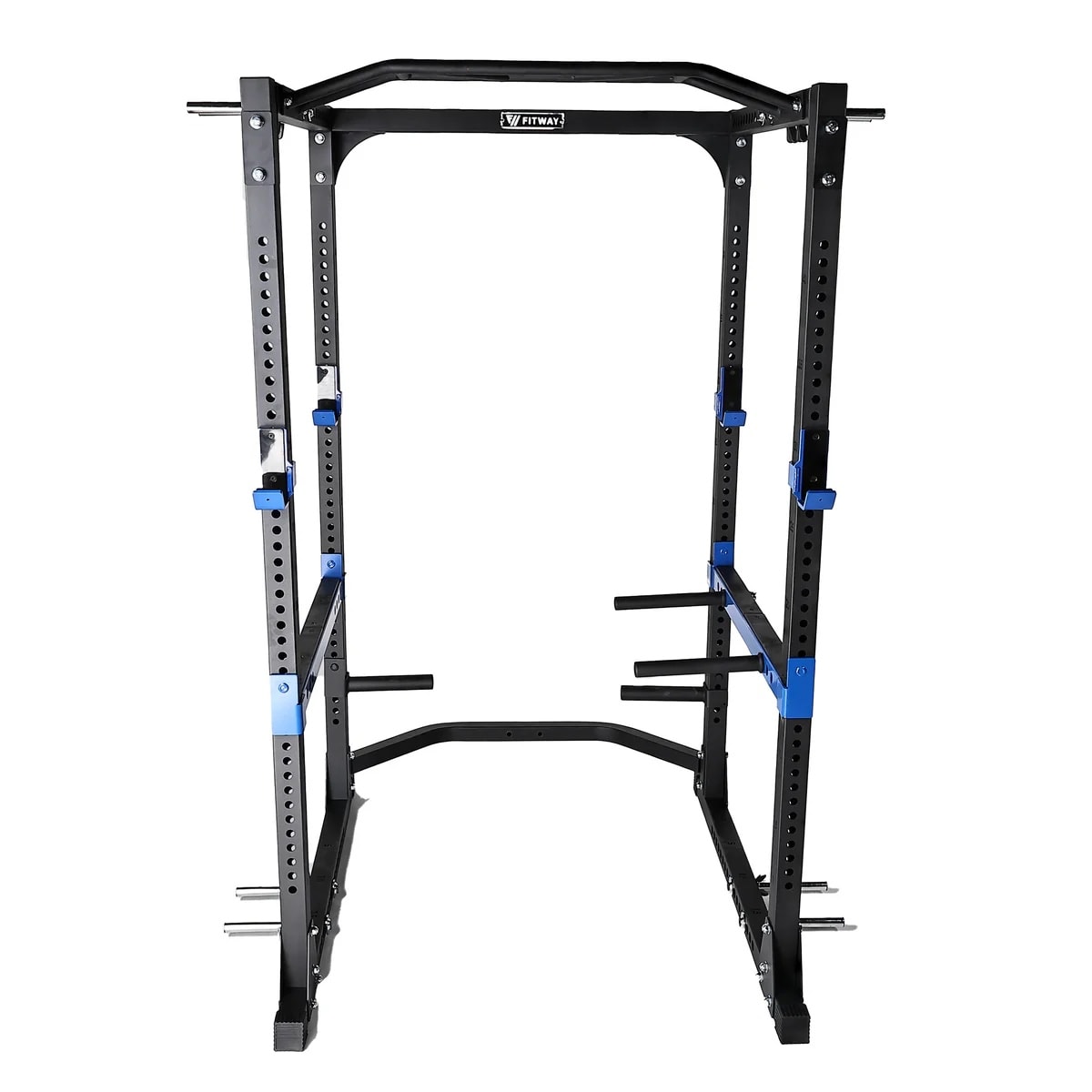Squat Stands, Half Racks and Power Cages Edmonton
If you're interested in setting up or enhancing your home gym, investing in a lifting rack is a staple item. Choosing the right lifting rack can be a challenge, especially when there are so many different options. Some people prefer squat stands for their compact size and easy transport, while others refuse to work out on anything less than a full rack. So, what are the differences between the three main categories of lifting racks?
Why Buy a Squat Rack or Power Rack For Your Home Gym
Squat racks will allow you to do a variety of exercises in your home gym. The key thing about a squat rack is it allows you to do squats and deadlifts safely. This is a very versatile piece of fitness equipment and particularly helpful for those wanting to lift heavy weights. This is also a great starting point for someone who has cardio in their fitness routine but wants to add weightlifting. Many people prefer doing exercises like squats, deadlifts, bench press and chest presses with a barbell, and this piece of equipment allows you to do so.
SQUAT STANDS
The squat stand or squat rack offers the smallest amount of support of the three options we'll be covering today. These stands are typically the most portable. Some squat stands come in two separate pieces with transport wheels, but even without wheels, they are light enough to move around easily. To put it simply, squat stands are a lightweight method of keeping the bar off the ground. As a result of their light weight and small footprint, squat stands typically have the lowest weight capacity. Another major factor for squat stands is that they usually do not have safety bars. Safety bars are an extremely important feature for those wishing to lift heavy.
The arms can often be moved up and down to adjust the bar height, or J-hook positioning can be adjusted. Squat stands generally come in at the lowest price point and can be a good option if you’re wanting a simple solution with a small footprint. Within the different squat stands, there will be a range of quality and weight capacity.

HALF RACKS
Half racks offer more support and adjustability than squat stands. They also feature safety bars and sometimes an overhead bar for pull-ups and band attachments. A half rack will only have one set of uprights and won't form the enclosed cage like you would see on a full power rack.
This type of rack provides great all-around freedom in your lifting. It is the perfect solution if you're looking for small footprint equipment but desire the extra support and options that a squat stand won’t offer. Many half racks will have increments on the front columns that allow you to position the J-hooks and safety bars in the exact position you need them. Proper positioning ensures that the safety bars will catch the bar at the right height and prevent injury.
Some half racks will come with plate storage, bar storage, and the option for attachments, whereas others will be more simple.

POWER RACK
A power rack, power cage, or full rack serves much the same purpose as a half rack but provides the most stability. The cage design has dual columns at the front and back, supported by horizontal bars at the top and bottom. This allows this style of rack to handle heavier weights than a half rack. A full power rack will take up more space than most squat stands and half racks, mainly in depth.
The dual-upright layout also means that power racks can often be used by two people at once—one on the inside and one on the outside of the rack. Usually, a rack wouldn't come with enough J-hooks and safety bars to do so, but extras can typically be purchased. Power racks vary in design, with some very simple and others that include more attachments, such as a dip station, built-in plate storage, or a multi-grip pull-up bar.
Overall, this option will provide you with the most support and the most options for your workout.

Popular Brands Available in Canada
Popular brands for squat racks or power cages include Body Solid, Hoist, FitWay, Torque, Inspire, and Ultimate. These are just a few of the trusted brands in Canada. The benefit of choosing a squat rack from these brands is that we can source parts if maintenance is needed down the road.
Smith Machines and Functional Trainers
If the above information is not the type of workout you are looking for you may want to consider a smith machine or a functional trainer. This is another super versatile machine where you can accomplish many different types of workouts.

